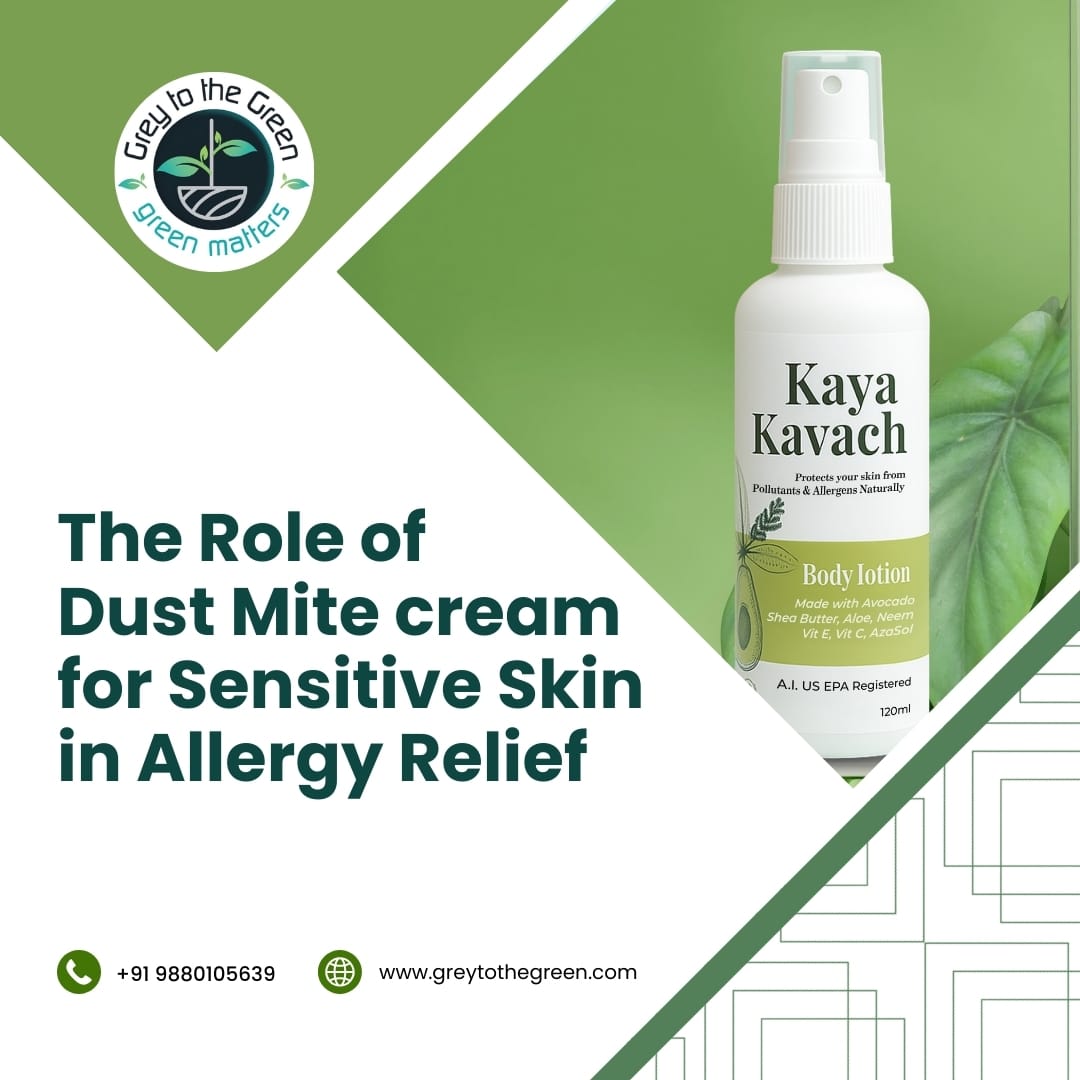Dust Mites and the Skin Barrier: The Hidden Connection
Long-Term Consequences of Dust Mite Exposure on Sensitive Skin
1. Chronic Eczema and Dermatitis
2. Skin Aging and Barrier Breakdown
3. Persistent Itching and Sleep Disturbance
4. Increased Risk of Secondary Infections
5. Allergic March (Progression of Allergies)
The Science of Immune Response
Kaya Kavach as a Dust Mite Cream: Why It Matters
Key Actions of Kaya Kavach:
Why Sensitive Skin Needs Dust Mite Cream Daily
How to Choose a Cream for Dust Mite Problems with Sensitive Skin
Environmental Changes + Dust Mite Cream = Best Results
- Wash bedding weekly in hot water.
- Use allergen-proof pillow and mattress covers.
- Maintain indoor humidity below 50%. Vacuum with HEPA filters.
The Long-Term Payoff
- Reduced flare-ups and eczema progression.
- Stronger, healthier skin barrier.
- Better sleep due to less itching.
- Lower risk of infections.
- Improved skin resilience with age.
Final Thoughts
Dust mites may be invisible, but their effects on sensitive skin are lasting and serious. They weaken the skin barrier, trigger chronic inflammation, and set the stage for eczema, infections, and even respiratory allergies.
Frequently Asked Questions (FAQs)
1.What is a dust mite cream?
A dust mite cream is a topical lotion formulated to protect sensitive skin from allergens released by dust mites. It strengthens the skin barrier, reduces irritation, and prevents flare-ups of eczema or dermatitis.
2. How does dust mite cream help sensitive skin?
Dust mite creams form a protective micro-layer that blocks allergens from penetrating the skin. Ingredients like aloe vera, neem, and avocado oil soothe inflammation, restore moisture, and support skin repair.
3. Can babies and toddlers use dust mite cream?
Yes. Hypoallergenic dust mite creams such as Kaya Kavach are safe for newborns, babies, and toddlers, as well as adults, offering gentle protection without harsh chemicals.
4. How often should I apply dust mite cream?
For best results, apply a dust mite cream twice daily—after bathing and before sleep. Consistent use helps maintain the skin barrier and prevents long-term allergic sensitization.
5. Does dust mite cream remove dust mites?
No. Dust mite creams do not eliminate dust mites in your environment. They reduce skin contact and allergic reactions, so pairing them with home cleaning measures is essential.
6. Can dust mite cream prevent eczema flare-ups?
Yes. By reinforcing the skin barrier and reducing allergen penetration, regular use of a dust mite cream can decrease the frequency and severity of eczema flare-ups in sensitive skin.
7. What ingredients should I look for in a dust mite cream?
Look for plant-based, hypoallergenic ingredients like shea butter, avocado oil, aloe vera, and neem. Avoid parabens, sulfates, and artificial fragrances for sensitive skin.



